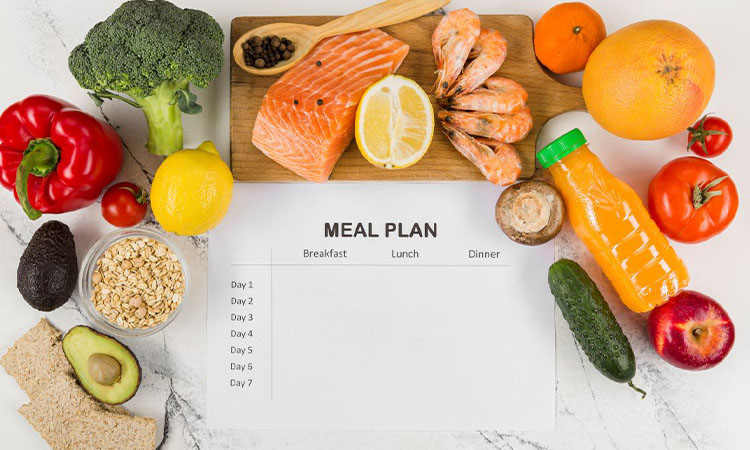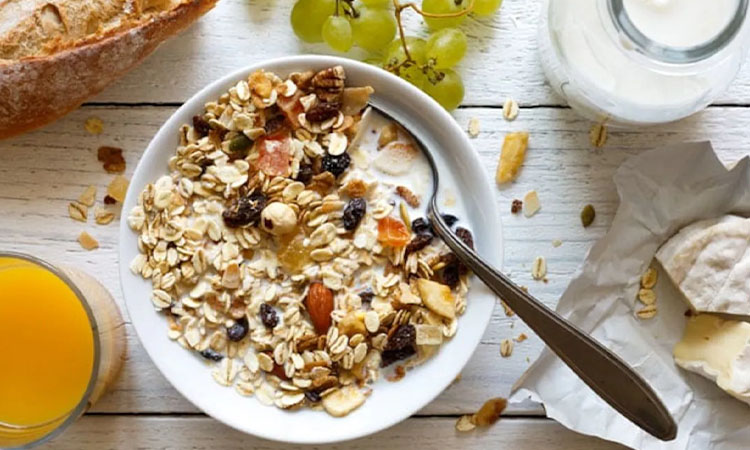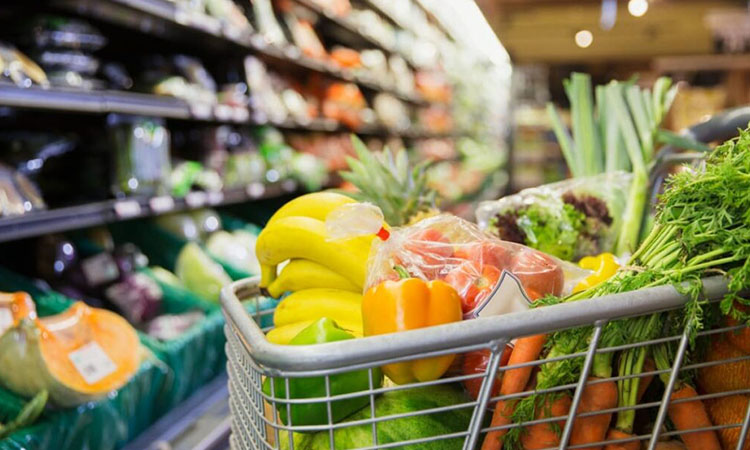In recent years, there has been a shift in the way we do our grocery shopping, moving from traditional wet markets to modern supermarkets, especially for those of us who live in urban areas. While supermarkets offer cleanliness and convenience, it's important to be aware of how they're designed so that we can become savvy shoppers.
Many supermarkets are cleverly laid out to persuade us to buy more than we need which, more often than not, leads to unhealthy choices. But don't let this stop you on your journey to eat healthier. We've got some handy grocery shopping tips to help you navigate the aisles and make healthier choices while still enjoying your shopping experience. Let's explore 6 simple tips for healthy grocery shopping!
1. Plan Ahead and Make a List
 Before heading to the grocery store, take some time to plan your meals for the week. Make a list of ingredients you'll need based on your meal plan and set a grocery budget. Check out our previous article "7 Ways To Eat Healthy On A Budget" for tips on how to enjoy healthy meals without breaking the bank.
Also, make sure not to shop on an empty stomach, as hunger can lead to impulsive and unhealthy food choices. Planning your meals around local and seasonal produce can save you money while maximising freshness and flavour.
Here’s a pro tip: planning your grocery list and budgeting in advance helps you avoid impulse purchases and ensures you only buy what you need to stay healthy. A little discipline is all you need to eat smart and stick to the plan!
Before heading to the grocery store, take some time to plan your meals for the week. Make a list of ingredients you'll need based on your meal plan and set a grocery budget. Check out our previous article "7 Ways To Eat Healthy On A Budget" for tips on how to enjoy healthy meals without breaking the bank.
Also, make sure not to shop on an empty stomach, as hunger can lead to impulsive and unhealthy food choices. Planning your meals around local and seasonal produce can save you money while maximising freshness and flavour.
Here’s a pro tip: planning your grocery list and budgeting in advance helps you avoid impulse purchases and ensures you only buy what you need to stay healthy. A little discipline is all you need to eat smart and stick to the plan!
2. Shop the Perimeter First
 When navigating the aisles of the grocery store, focus on shopping the perimeter first. This is where you'll find fresh produce, lean proteins, eggs, dairy products, and whole grains. These nutritious staples should be the first items that go into your cart, as they are healthier and fresher options compared to processed and packaged foods commonly found in the centre aisles.
When navigating the aisles of the grocery store, focus on shopping the perimeter first. This is where you'll find fresh produce, lean proteins, eggs, dairy products, and whole grains. These nutritious staples should be the first items that go into your cart, as they are healthier and fresher options compared to processed and packaged foods commonly found in the centre aisles.
3. Choose Whole Foods
 Opt for whole foods whenever feasible. Whole foods are minimally processed and contain more nutrients compared to their processed counterparts. For example, choose whole grains such as brown rice and oats over refined grains, and select fresh fruits and vegetables. These whole foods provide essential vitamins, minerals, and dietary fibre, which promote overall health and wellbeing.
Opt for whole foods whenever feasible. Whole foods are minimally processed and contain more nutrients compared to their processed counterparts. For example, choose whole grains such as brown rice and oats over refined grains, and select fresh fruits and vegetables. These whole foods provide essential vitamins, minerals, and dietary fibre, which promote overall health and wellbeing.
4. Read Food Labels
 Take a moment to read and compare food labels carefully to make informed choices about the products that you're buying. Pay close attention to both the ingredients list and the nutrition facts panel (remember, Google is a friend!). Seek out products with simple, recognisable ingredients, and avoid those high in added sugars, sodium, and saturated fats. By understanding food labels, you empower yourself when it comes to selecting healthier options for you and your family.
Take a moment to read and compare food labels carefully to make informed choices about the products that you're buying. Pay close attention to both the ingredients list and the nutrition facts panel (remember, Google is a friend!). Seek out products with simple, recognisable ingredients, and avoid those high in added sugars, sodium, and saturated fats. By understanding food labels, you empower yourself when it comes to selecting healthier options for you and your family.
5. Buy in Bulk and Save
 Buying in bulk can lead to substantial savings, particularly for staple items such as rice, lentils, beans, oats, and spices. Opting for larger quantities of these essentials can help you cut costs over time. Buying in bulk also reduces packaging waste, making it an eco-friendly choice.
When making purchases, consider generic or store brands, typically placed on the lower shelves (give those knees some workout!). These alternatives are often cheaper and just as nutritious, providing additional savings without compromising on quality. However, be mindful of storage space and only purchase what you can realistically use before the expiration date.
Buying in bulk can lead to substantial savings, particularly for staple items such as rice, lentils, beans, oats, and spices. Opting for larger quantities of these essentials can help you cut costs over time. Buying in bulk also reduces packaging waste, making it an eco-friendly choice.
When making purchases, consider generic or store brands, typically placed on the lower shelves (give those knees some workout!). These alternatives are often cheaper and just as nutritious, providing additional savings without compromising on quality. However, be mindful of storage space and only purchase what you can realistically use before the expiration date.
6. Embrace Canned and Frozen Foods Wisely
Contrary to popular belief that canned and frozen foods are usually unhealthy and less nutritious, it's important to recognise that not all canned foods are the same. For example, canned and frozen vegetables are as nutritious as their fresh counterparts and are often harvested at the peak of their nutritional content. Technological advancements in food preservation can help retain their nutrients.
For instance, canned beans and corn, as well as frozen broccoli, spinach, and berries, offer convenience and have a longer shelf life while maintaining their nutritional value. Similarly, canned tuna and sardines are excellent examples of nutrient-rich options. By embracing canned and frozen foods wisely, you can enjoy their convenience without compromising on nutrition.
In conclusion, healthy grocery shopping doesn't have to be complicated or expensive. With a little planning and smart shopping strategies, you can fill your cart with nutritious foods that nourish your body and support your overall health and wellbeing. By following these healthy grocery shopping tips, you can make positive changes to your diet and lifestyle.
References
-
University of Southern California. (2023, November 17). Psychology of the grocery store. Retrieved from https://appliedpsychologydegree.usc.edu/blog/psychology-of-the-grocery-store
-
American Heart Association. (2018, April 16). 9 Grocery Shopping Tips. Retrieved from https://www.heart.org/en/healthy-living/healthy-eating/cooking-skills/shopping/grocery-shopping-tips
-
EatRight.org. (2022, October 3). Are canned foods nutritious for my family? Retrieved from https://www.eatright.org/food/planning/smart-shopping/are-canned-foods-nutritious-for-my-family
This article is contributed by
Georgen Thye, Consultant Dietitian
BSc. (Hons.) Nutrition and Dietetics, IMU
Council Member of the Malaysian Dietitians' Association (2021-2023)




